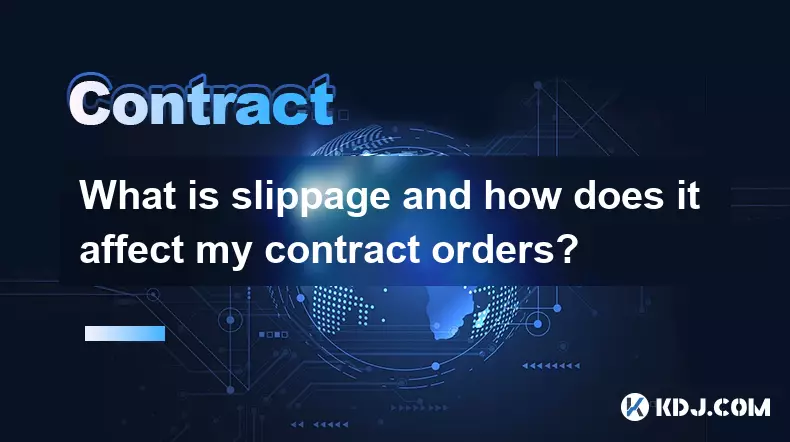-
 bitcoin
bitcoin $100977.009184 USD
-2.05% -
 ethereum
ethereum $3282.009150 USD
-3.23% -
 tether
tether $0.999813 USD
-0.02% -
 xrp
xrp $2.208254 USD
-4.89% -
 bnb
bnb $951.411089 USD
0.55% -
 solana
solana $155.761205 USD
-2.84% -
 usd-coin
usd-coin $1.000217 USD
0.02% -
 tron
tron $0.284475 USD
-1.28% -
 dogecoin
dogecoin $0.162363 USD
-1.53% -
 cardano
cardano $0.533988 USD
-0.47% -
 hyperliquid
hyperliquid $39.174339 USD
-3.22% -
 chainlink
chainlink $14.724828 USD
-1.16% -
 bitcoin-cash
bitcoin-cash $477.297986 USD
-1.28% -
 zcash
zcash $554.227426 USD
17.30% -
 ethena-usde
ethena-usde $0.998995 USD
-0.03%
How to Create a Trading Plan for Bitcoin (BTC) Contracts?
Master BTC contract trading by understanding leverage, funding rates, and risk management—key to surviving volatile markets.
Nov 04, 2025 at 08:04 pm

Understanding the Basics of Bitcoin Contracts
1. Bitcoin contracts, commonly referred to as BTC futures or perpetual swaps, allow traders to speculate on the price movement of Bitcoin without owning the underlying asset. These derivatives are offered on major exchanges such as Binance, Bybit, and OKX, providing both leverage and shorting capabilities.
2. Before creating a trading plan, it's essential to understand contract types—perpetual contracts do not have an expiry date, while quarterly futures settle on a predetermined date. Each has different funding mechanisms and volatility profiles.
3. Leverage amplifies both gains and losses. A 10x leverage means a 1% move in price results in a 10% change in your position value. Misuse of leverage is one of the top reasons for account blowups in crypto derivatives trading.
4. Funding rates play a crucial role in perpetual contracts. Long positions pay short positions when funding is positive, which typically happens in bullish markets. Traders must factor in these periodic payments when holding positions overnight.
5. Accurate knowledge of order types—limit, market, stop-market, and take-profit—is vital for effective execution within a BTC contract trading strategy.
Defining Your Risk Management Framework
1. Determine the maximum percentage of your portfolio you're willing to risk per trade. Many professional traders recommend risking no more than 1-2% per position to sustain long-term survivability in volatile markets.
2. Set hard stop-loss levels based on technical support/resistance or volatility indicators like Average True Range (ATR). For example, placing a stop 2% below entry if that aligns with a key support zone adds discipline to your approach.
3. Use position sizing calculators to adjust trade volume according to your stop distance and account size. This ensures consistent risk across trades regardless of leverage used.
4. Avoid emotional adjustments to stop-losses during drawdowns; predefine adjustment rules within your plan to prevent reactive decisions.
5. Consider using guaranteed stop-loss orders where available, though they may come with fees. These prevent slippage during flash crashes or high-volatility events common in BTC markets.
Building a Strategy Based on Market Conditions
1. Identify whether the market is trending, ranging, or experiencing breakout conditions. Use tools like moving averages, Ichimoku Cloud, or ADX to classify the environment before deciding on entry tactics.
2. In strong uptrends, consider buying pullbacks to dynamic supports such as the 20-period EMA on higher timeframes. Combine this with volume analysis to confirm participation on the long side.
3. During consolidation phases, range-bound strategies work best. Define clear upper and lower boundaries and place limit entries near extremes with tight stops just outside the range.
4. Breakout strategies require confirmation—avoid chasing price immediately after it clears a level. Wait for a retest of the broken resistance-turned-support or use momentum filters like RSI crossing above 50.
5. Incorporate on-chain data such as exchange inflows/outflows or whale movement from platforms like Glassnode to validate your technical setup with macro sentiment cues.
Backtesting and Journaling for Consistency
1. Test your strategy against historical BTC price data using backtesting tools available on TradingView or proprietary platforms. Focus on win rate, risk-reward ratio, and maximum drawdown metrics.
2. Simulate trades in a demo environment with realistic spreads and slippage to evaluate how your plan performs under live-like conditions.
3. Maintain a detailed trading journal recording every decision: entry rationale, position size, emotional state, and outcome. Review weekly to detect behavioral patterns or flaws in logic.
4. Track performance separately for long and short setups. Bitcoin’s asymmetric volatility often leads to differing success rates between directional bets.
5. Refine your plan iteratively—small tweaks based on evidence outperform complete overhauls driven by recent losses.
Frequently Asked Questions
What is the ideal leverage for Bitcoin contract trading?There is no universal 'ideal' leverage. Conservative traders often use 2x to 5x, especially when holding positions for extended periods. High-frequency scalpers might go up to 10x–20x but only with strict stop-loss enforcement. The right choice depends on your strategy, risk tolerance, and market volatility at the time of entry.
How do I handle liquidation risks in BTC futures?Liquidation occurs when your margin falls below maintenance requirements. To avoid it, reduce leverage, increase your initial margin, or tighten stop-losses. Monitor your liquidation price displayed on exchange interfaces and ensure it has buffer room relative to expected volatility swings.
Can news events be integrated into a BTC contract trading plan?Yes. Macroeconomic announcements, regulatory updates, or ETF decisions can trigger sharp moves in BTC. Integrate a calendar of key events and either avoid trading during high-impact releases or prepare volatility-based strategies such as straddles ahead of known catalysts.
Should I automate my Bitcoin contract trading plan?Automation through bots or API-connected scripts can help enforce discipline and react faster than manual execution. However, automated systems require rigorous testing and monitoring. Unexpected market gaps or exchange outages can lead to unintended outcomes, so human oversight remains critical even with algorithmic assistance.
Disclaimer:info@kdj.com
The information provided is not trading advice. kdj.com does not assume any responsibility for any investments made based on the information provided in this article. Cryptocurrencies are highly volatile and it is highly recommended that you invest with caution after thorough research!
If you believe that the content used on this website infringes your copyright, please contact us immediately (info@kdj.com) and we will delete it promptly.
- BlockDAG, Avalanche, Dogecoin: Crypto's Leading Trio in 2025
- 2025-11-07 22:05:01
- Layer 2 Coins: Will There Be a Potential Explosion by 2026?
- 2025-11-07 16:50:02
- Filecoin, ICP, and the AI Infrastructure Renaissance: Is History Repeating?
- 2025-11-07 16:50:02
- Bitcoin's Wild Ride: Surges, Zeros, and the Search for Stability
- 2025-11-07 17:05:01
- XRP, Bitcoin, and the Rally: What's the Deal, New York?
- 2025-11-07 17:25:01
- Filecoin, DePIN, and a Technical Breakout: What's the Buzz?
- 2025-11-07 17:05:01
Related knowledge

How to trade a quarterly futures contract versus a perpetual contract?
Nov 06,2025 at 06:44am
Understanding the Core Differences Between Quarterly and Perpetual Contracts1. Quarterly futures contracts have a fixed expiration date, typically set...

How to understand the liquidation engine for a crypto contract?
Nov 06,2025 at 09:05am
Understanding the Role of Liquidity Pools in Decentralized Finance1. Liquidity pools are foundational components within decentralized exchanges (DEXs)...

How to use a demo account to practice trading contracts?
Nov 06,2025 at 08:55am
Understanding the Purpose of a Demo Account in Contract Trading1. A demo account allows traders to simulate real market conditions without risking act...

What is slippage and how does it affect my contract orders?
Nov 06,2025 at 05:14am
Understanding Slippage in Cryptocurrency Trading1. Slippage refers to the difference between the expected price of a trade and the actual price at whi...

How to report crypto contract gains on my taxes?
Nov 06,2025 at 06:20pm
Tax Classification of Cryptocurrency Gains1. Cryptocurrency contract gains are typically treated as capital gains in most jurisdictions, including the...

What are the trading hours for CME Bitcoin contracts?
Nov 06,2025 at 02:59pm
Understanding CME Bitcoin Futures Trading Schedule1. The CME Group offers Bitcoin futures contracts that trade nearly around the clock, aligning close...

How to trade a quarterly futures contract versus a perpetual contract?
Nov 06,2025 at 06:44am
Understanding the Core Differences Between Quarterly and Perpetual Contracts1. Quarterly futures contracts have a fixed expiration date, typically set...

How to understand the liquidation engine for a crypto contract?
Nov 06,2025 at 09:05am
Understanding the Role of Liquidity Pools in Decentralized Finance1. Liquidity pools are foundational components within decentralized exchanges (DEXs)...

How to use a demo account to practice trading contracts?
Nov 06,2025 at 08:55am
Understanding the Purpose of a Demo Account in Contract Trading1. A demo account allows traders to simulate real market conditions without risking act...

What is slippage and how does it affect my contract orders?
Nov 06,2025 at 05:14am
Understanding Slippage in Cryptocurrency Trading1. Slippage refers to the difference between the expected price of a trade and the actual price at whi...

How to report crypto contract gains on my taxes?
Nov 06,2025 at 06:20pm
Tax Classification of Cryptocurrency Gains1. Cryptocurrency contract gains are typically treated as capital gains in most jurisdictions, including the...

What are the trading hours for CME Bitcoin contracts?
Nov 06,2025 at 02:59pm
Understanding CME Bitcoin Futures Trading Schedule1. The CME Group offers Bitcoin futures contracts that trade nearly around the clock, aligning close...
See all articles





















![The Graph Price Prediction [GRT Crypto Price News Today] The Graph Price Prediction [GRT Crypto Price News Today]](/uploads/2025/11/07/cryptocurrencies-news/videos/690d4df44fe69_image_500_375.webp)




















































